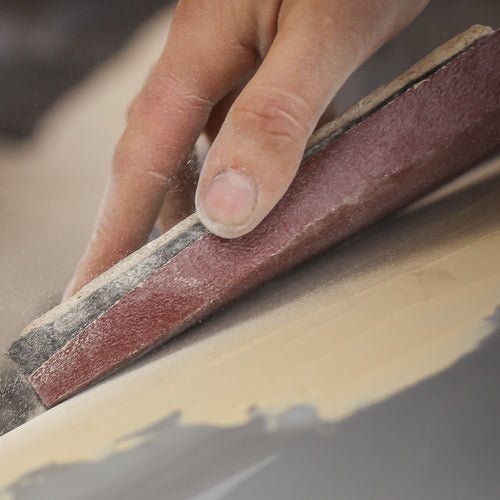When you want your car to look its best, selecting a sanding method makes all the difference. Whether you’re a seasoned car mechanic or a DIY auto repair newbie, understanding the benefits and downsides of wet and dry sanding will help you make the best decision. Discover which to choose between wet and dry sanding a car to get the perfect finish for your vehicle!
Wet Sanding
Wet sanding involves using water as a lubricant to minimize scratches and produce a smooth finish. This method is ideal for removing deep scratches, smoothing out peeling paint, and preparing surfaces for final polishing.
The pros of wet sanding include few dust particles in the air and a fine, controlled finish. However, it is time-consuming and requires a steady supply of water. Essential tools include high-grit sandpaper, a spray bottle of water, and a rubber sanding block.
Dry Sanding
Dry sanding, on the other hand, involves using sandpaper without water. This method is faster and more convenient than wet sanding, making it ideal for removing old paint and rust and preparing large areas for further work.
The advantages of dry sanding include speed and simplicity, but it may produce a lot of dust and result in deeper scratches if not done carefully. Essential equipment includes automotive sandpaper of various grits, an electric sander, and dust masks for personal safety.
Comparing the Two
When choosing between wet and dry sanding, consider factors like finish quality, dust control, time, and cost. Wet sanding typically offers a finer finish with minimal airborne dust, making it perfect for detailed work.
Dry sanding, in contrast, is faster and better suited for initial surface preparation. For example, when restoring a vintage car, you might start with dry sanding to remove old paint. Then, you could perform wet sanding for a smooth finish before painting.
When To Choose Either Sanding Method
Selecting the ideal method depends on the task at hand. Use wet sanding for final surface preparation, removing minor scratches, and achieving a polished finish. Dry sanding is best when you need to remove rust and old paint or prepare large areas for proceeding work.
Assess the condition of your car’s surface to decide the best sanding approach. For instance, if you’re dealing with a heavily oxidized surface, start with dry sanding, then move to wet sanding for the finishing touches.
Best Practices for Safe and Effective Sanding
Safety is paramount when sanding. Protect your hands and face with goggles, gloves, and dust masks. Ventilate your workspace and cover nearby areas to protect them from dust and water. Use consistent, even pressure, and move the sandpaper in circular motions for optimal results. Also, regularly check your progress to avoid over-sanding. Patience and attention to detail are key to achieving the perfect finish with wet and dry sanding.
Choosing between wet and dry sanding a car significantly affects your car’s appearance. Wet sanding offers a finer finish with minimal dust, while dry sanding is faster for initial preparation. Assess your car’s needs and condition to make an informed decision and bring out its best appearance.


